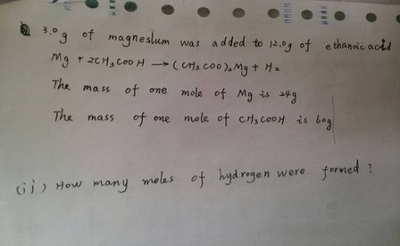材料化学专业英语中长难句翻译技巧及解析
材料化学专业英语长句多,翻译困难。本文举例解析长难句的句型结构,并结合专业知识进行句子翻译技巧的归纳总结,旨在为材料化学专业英语的教和学提供帮助。
材料化学主要介绍金属、陶瓷、高分子及复合材料的结构、性能、加工、设计及用途,其专业英语与日常英语截然不同[1],句子以长难句为主,这对学生阅读专业文献造成很大困扰。本文举例解析长难句的句型结构,并结合材料化学专业知识进行句子翻译技巧的归纳总结,为材料化学专业英语的教和学提供帮助。
1.翻译技巧
为了专业问题表述的严密性和准确性,材料化学专业英语中的句子多为带有修饰成分的长句,即句中多有定语、状语、补语等从句;再者,为了专业问题表述的客观性和专业性,句子多用被动语态,又有若干特定句型,这些就导致专业英语句子翻译困难[2-4]。专业英语的翻译要求“信、达、雅”:信—准确,即译文要不偏离、不遗漏、不随意增减意思,符合学科的发展规律;达—通顺明白,指句子符合汉语的表达习惯,不拘泥于原文形式;雅—专业得体,指译文选词要专业得体,简明优雅。实际翻译科技英语句子时,首先要断句准确,即找到句子的主干(主、谓、宾)和枝叶(定、状、补),再根据句型(如It-that句型、被动句型、省略句型等)和特定词汇,结合上下文和专业知识才能准确翻译句子。因此,专业英语的翻译是对语法、特殊句型、特定词汇和专业知识的综合运用。
2.长难句解析
2.1带有特征词汇的句子
周丽云[4,5]归纳了表达无机、有机化学经典反应的句子中常带有的一些特征词汇,通过这些词汇可以辨识反应类型并准确翻译句义。表明特定反应类型的词有:decompose或decomposition (分解),disproportionate或disproportionation (歧化),neutralize或neutralization (中和),oxidize或oxidation (氧化),reduce或reduction (还原),ionize或dissociate (电离),hydrolyze或hydrolysis (水解),electrolyze或electrolysis (电解),substitution或substitute或replacement或displacement (取代),addition (加成),elimination (消除),polymerize或polymerization (聚合),catalysis (催化)等反应,未表明反应类型的词有:react (反应),form (形成)。例如:In addition polymerization,the starting material is a monomer in a solution,emulsion,vapor,or even in bulk,and the polymer resulting from the polymerization has the same repeating unit as the starting monomer.[2]画线部分为句子主干,表明该句讲单体和聚合物;in addition polymerization为状语,表明反应类型为加聚;in a solution,emulsion,vapor,or even in bulk也为状语,表明单体反应的场所;resulting from polymerization作为polymer的定语,表明聚合物由聚合得到;the same repeating unit as the starting monomer作为宾语,重点是the same ... as短语的辨识。结合专业知识,该句可译为:在加聚反应中,原料是在溶液、乳液、气相或本体中的单体,而聚合所得聚合物具有与单体组成相同的重复单元。
描述材料性能及性能变化的句子一般也带有特征词汇。描述力学性能相关的词汇有:strong (强),weak (弱),stiff (硬),soft (软),brittle (脆),tough (韧),ductile(易延展的)或ductility(延展性),strengthen(强化),fracture(断裂),plastic deformation (塑性形变),elastic deformation (弹性形变),creep (蠕变),failure (失效),recovery (回复),fatigue (疲劳),yield strength(屈服强度)等,描述材料其他性能的特征词汇有:corrosion(腐蚀),degradation(退化),electrical(电的,电学的),thermal(热的,热学的),magnetic(磁性的,磁学的),optical(光学的)等。例如:Polymers are less stiff,less strong and less tough than most metals,so the new component requires careful redesign.[2](与大部分金属相比,高分子的硬度、强度和韧性都要差一些,因此,新的组分需要仔细地再设计。) 又如:This method(Powder metallurgy)is especially suitable for metals having low ductility,since only small plastic deformation of the powder particles need occur.[2]画线部分为句子主干,having low ductility为metals的修饰定语,since引导原因状语从句,全句可译为:这种方法(粉末冶金术)特别适合延展性小的金属,因为粉末颗粒只需发生小的塑性变形。又如:Corrosion in simple terms occurs in metals because most metals are not in natural state until they return to the ore form in which we found them.[2]画线部分为主句,句中in simple terms(简单地说)是副词短语,翻译时作为插入语前置,because引导原因状语从句,整句可译为:简言之,金属腐蚀的发生是因为大部分金属的存在形式都不是天然状态,直到它们发生腐蚀回到它们被发现时的矿石形式。

2.2特殊句型
(1)It-that句型
It-that句型的形式为“It is/was ... that ...”,句子可能为强调句,也可能it为形式主语,that后面的部分为真正的主语。若去掉It is/was...that句子仍然成立,则为强调句;若it为形式主语的句子,则一般真正的主语都很长,将that后面的句子成分提前作为主语可使句子成立。例如:It is not until relatively recent times that scientists came to understand the relationships between the structural elements of materials and their properties.[2]该句型实为it is not until...that句型,主要用于强调时间状语,译为“直到……才……”,全句译为:直到近代,科学家才开始理解材料的结构元素与性质之间的关系。又如:It was discovered that the properties of a material could be altered by heat treatments and by the addition of other substances.[2]此句中it为形式主语,真正的主语是that引导的主语从句,该句可译为:人们发现,材料的性质可以通过热处理和添加其他物质而改变。It is said (reported,learned ...) that ...皆为此结构,常译为“据说(据报道,据悉……)”。
(2)被动句
由于科技英语中经常需要描述客观事实,在行为或结果的施事者不明确或不能给出时,可用被动句表达,此外,有时为了强调也用被动句。例如:All the elements have been classified according to electron configuration in the periodic table.[2]此句用被动语态是为了强调客观规律性,可译为:周期表中的所有元素按照电子构型分类。又如:Many an applied scientist or engineer,whether mechanical,civil,chemical,or electrical,will at one time or another be exposed to a design problem involving materials.[2]画线部分为句子主句,whether ... or部分为scientist or engineer的定语,at one time or another为时间状语,involving materials为problem的定语,全句译为:许多应用型科学家或工程师,无论是机械方面的、民用方面的、化学方面的还是电学方面的,他们都曾经面临材料的设计问题。虽然是被动句,但考虑汉语表达通顺的要求,译成汉语并不一定用被动句。
(3)省略句
为了句子简明扼要、避免重复、突出新信息并使上下文紧密连接,可将句子中的某个单词、短语甚至某个句子成分(从句、谓语或主语等)省略。例如:Impurity point defects are found in solid solution,of which there are two types: substitutional and interstitial.[2]此句为了避免重复,在substitutional和interstitial后都省略了solid solution,而翻译时为准确起见,应译出省略内容,即固溶体中杂质点缺陷有两类:置换固溶体和间隙固溶体。再如:The increments of A and B do not necessarily have to be the same,nor does their spacing.[2]这是描述两种不同单体A和B共聚形成共聚物的结构,其中nor does their spacing就是省略句,完整的应为“their spacing does not necessarily have to be the same,either.”,全句可译为:单体A和B的增长不必相同,它们的间距也不必相同,即单体A和B的增长可以有规律也可以无规律,它们之间的距离可以相同也可以不同。
作者:杨珊 来源:考试周刊 2016年83期
